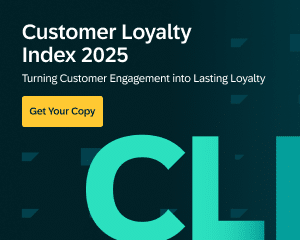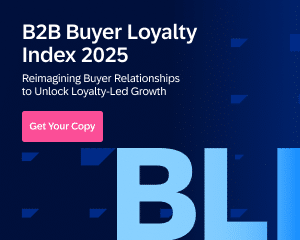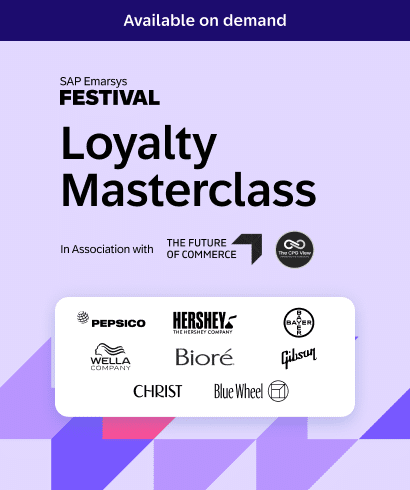In 2025, the internet looks nothing like it did a decade ago. Once static and impersonal, websites have transformed into dynamic, adaptive experiences powered by artificial intelligence. This shift isn’t just a technological evolution—it’s a seismic change in how businesses connect with their audiences.
Companies leveraging AI-driven personalization are engaging visitors more effectively and rewriting the rules of customer experience. The question is no longer if you should adopt AI but how quickly you can harness its potential.
This guide will show you how to unleash the innovations of AI website personalization and create experiences that adapt in real-time to each visitor’s unique journey.
Inside, you’ll discover:
- Why your competitor’s conversion rates are 42% higher (hint: their content adapts to each customer)
- What can happen when AI is built-in rather than bolted on
- How to launch AI personalization without disrupting your tech stack
- Why most businesses fail at personalization—and how to avoid their costly mistakes
- Four new AI-innovations entering the e-commerce stage
How AI Rewrites the Web
Let’s take a look at some of the ways that AI is changing the game and rapidly rewriting the web:
From static to dynamic experiences
In the early days of the internet, websites were like paintings—static, unchanging, and universal in their message. Every visitor saw the same thing, regardless of their needs or desires. It was a one-size-fits-all approach—useful but limited.
With AI, websites began to evolve into living, breathing ecosystems. Machine learning algorithms now analyze visitor behavior in milliseconds—allowing websites to dynamically reshape themselves in real-time. These systems go beyond basic rules-based personalization by continuously learning from interactions across your digital properties.
When Websites Become Mind Readers (with a Little Help from Predictive Analytics)
Predictive analytics doesn’t just react—it anticipates. It looks at your customers’ behavior and says, “I bet they’re going to want this next.”
This proactive prediction creates a competitive edge for organizations implementing AI-driven personalization. For instance, a travel website can detect when someone might plan a family vacation based on recent browsing patterns, surfacing itinerary suggestions and exclusive package offers in real time. Similarly, consumer product brands can leverage comparable technology to propose complementary items or tailor cross-sell bundles according to an individual’s past purchases or demographic profile.
Predictive capabilities can extend to:
- Identifying high-value visitors likely to convert with specific incentives.
- Detecting friction points in the customer journey before abandonment occurs.
- Recommending logical next steps based on historical behavior patterns of similar users.
The Innovations Powering Next-Wave Personalization
Real-time behavioral targeting
By analyzing clicks, scroll depth, time on page, and navigation paths in the moment, modern AI systems adapt crucial website elements to fit each visitor’s intent. While e-commerce first championed these tactics, rapid adoption is happening across multiple verticals:
- Retail and consumer products: Sites instantly update product lines and promotional messaging if a shopper lingers on a specific category, suggesting items that match their interests.
- Travel and hospitality: Booking portals showcase location-specific deals or curated itineraries the second they detect someone exploring destination pages or flight searches.
- Media and communications: Online publishers dynamically feature trending articles or recommended videos based on a visitor’s real-time reading and browsing patterns.
This seamless customization creates more relevant experiences, boosting engagement metrics (like time spent or conversion rates) and helping customers navigate diverse offerings without the burden of endless scrolling or guesswork.
Dynamic content optimization
Another innovation that’s saving hours of tedious manual A/B testing is dynamic content optimization. Thanks to advanced algorithms, AI-driven platforms can automatically test and refine countless combinations of:
- Headlines and copy variations
- Page layouts and component positioning
- Visual elements including images, colors, and UI components
- Call-to-action placement and messaging
This optimization happens seemingly like magic without marketing team intervention, and delivers demonstrable improvements in key performance indicators. Companies implementing these solutions report a 42% increase in conversion rates when AI manages content optimization at scale.
The technology has evolved beyond simple testing to include sophisticated elements like:
- Automatic identification of underperforming page elements
- Cross-channel consistency while maintaining personalization
- Brand guideline compliance throughout the optimization process
Privacy and personalization: No more “choose one”
Privacy regulations are tighter than ever before. As a result, balancing personalization with privacy compliance is non-negotiable. Modern AI systems implement privacy-by-design principles that ensure personalized experiences without compromising user trust or violating regulations like GDPR, CCPA, and emerging state-level privacy frameworks.
Key privacy-safe personalization approaches include:
- Federated learning techniques that improve personalization models without transmitting personal data
- Differential privacy methods that add statistical noise to protect individual identity while maintaining aggregate insights
- Contextual targeting that personalizes based on session behavior rather than persistent profiles
- Transparent consent management integrated directly into the personalization engine
The Big Benefits of AI-Level Personalization
Now that you know the technology behind personalization, let’s explore the benefits of using AI to personalize the customer experience for your website.
Increased engagement and conversion rates
Companies known for their fast growth derive 40% more of their revenue from personalization, compared to their slower-growth counterparts. This performance improvement stems from creating more relevant experiences that connect with visitor intent.
A prime example is Luisaviaroma.com, a leading luxury fashion retailer, which leveraged AI-driven personalization to achieve remarkable results. By adopting the SAP Emarsys AI Marketing Platform, the company boosted automated email revenue by an astounding 900%. These outcomes were driven by advanced profiling, segmentation, and real-time personalized content delivery across web and email channels.

Operational efficiency
What if you could allocate more of your marketing budget to high-potential customers? Or match products to customer needs precisely and accurately, reducing costly returns?
By collecting and analyzing customer data, businesses can allocate resources precisely where needed—no more and no less. With AI-driven automation, brands can optimize everything from inventory management to marketing spend, ensuring that each decision is backed by real-time insights.
For example, predictive analytics can help brands identify high-intent shoppers, allowing them to prioritize engagement strategies for those most likely to convert. At the same time, machine learning models can assess return risk based on past behaviors, enabling businesses to proactively address potential issues—whether that means offering better product recommendations, adjusting sizing guides, or improving fulfillment accuracy.
Growth that scales
For mid-market organizations experiencing growth, AI personalization provides the ability to scale sophisticated marketing approaches without proportional increases in team size or resources. This scalability comes through:
- Automated learning models that improve performance without manual intervention.
- Dynamic content generation that expands personalization across product lines and geographies.
- Integration with existing martech systems to leverage current investments.
City Beach, an Australian youth fashion retailer, exemplifies the power of these tactics. By partnering with SAP Emarsys and implementing AI personalization they achieved a staggering 105% year-over-year growth in email revenue and successfully won back 48% of defecting customers within just 90 days.
Baby Steps to Big Wins: Your AI Launch Plan
Implementing AI-driven personalization doesn’t have to be daunting. The key is starting small with the most impactful elements and building out from there. Here’s how to do it:
1. Identify a high-impact page
Before implementing AI-driven personalization, it’s important to start with a high-impact page—one that consistently attracts visitors and influences key conversion actions. Selecting the right page ensures that your efforts deliver meaningful insights and measurable improvements, allowing you to refine and scale personalization effectively.
Choose strategically
Pick a page that sees steady traffic—such as your homepage, a key landing page, or a popular product category—so you can gather enough data to assess AI’s impact. This quick-win approach helps validate AI’s potential before rolling it out across your site.
Set clear goals
Decide what success looks like—whether it’s higher conversions, increased time on page, or improved click-through rates for key CTAs. If, for example, your homepage hero banner is often ignored, consider personalizing it with dynamic images or tailored messaging to capture user attention and drive engagement.
2. Leverage existing tools
Before investing in new AI solutions, take advantage of the tools you already have. Many marketing and e-commerce platforms come with built-in AI personalization features that can be activated with minimal effort. This approach allows you to test AI-driven personalization quickly without disrupting your existing workflows.
Check your current stack
Platforms like SAP Emarsys offer ready-to-enable AI personalization tactics, eliminating the need for a massive overhaul. Explore your marketing automation platform, CMS, or eCommerce dashboards to see what AI-driven capabilities are already available.
Minimize disruption
If your current tech stack lacks advanced AI functionality, consider a vendor that seamlessly integrates with your existing systems. The goal is to implement AI-powered personalization with minimal downtime, ensuring a quick proof-of-concept before making larger-scale investments.
3. Launch a focused test
To successfully introduce AI-driven personalization, start with a controlled experiment rather than overhauling your entire website. A focused test allows you to gather clear insights, refine your approach, and build a strong case for further implementation.
Start simple
Personalize just one or two key elements—such as your hero section, product recommendations, or CTA buttons. Making too many changes at once can skew analytics and create an inconsistent experience for users. Keep it simple to clearly measure AI’s impact.
Measure early results
Track key performance metrics such as click-through rate, dwell time, or cart additions to evaluate the effectiveness of your personalization efforts. If AI-driven changes lead to a noticeable lift in engagement, you’ll have concrete evidence to support scaling personalization across more areas of your site.

4. Secure buy-in for expansion
Once your initial AI-driven personalization test delivers positive results, the next step is to gain internal support for a broader rollout. Demonstrating measurable improvements will help convince stakeholders that AI personalization is worth expanding across more pages and channels.
Show tangible outcomes
Share early success metrics—such as higher engagement, increased conversions, or improved click-through rates—with team leaders and decision-makers. Providing data-backed insights makes it easier to justify further investment in personalization.
Scale gradually
After proving success in one area, expand AI personalization strategically to other high-impact sections, such as:
- Product detail pages – Tailor recommendations based on browsing history.
- Checkout flow – Reduce abandonment by highlighting relevant upsells or promotions.
- Email campaigns – Use AI-driven segmentation to send more relevant offers.
A step-by-step expansion approach like this ensures a smooth transition while giving you the chance to continuously refine AI-driven experiences.
5. Evaluate vendors for the next phase
As you scale AI-driven personalization, choosing the right technology partner is essential for long-term success. The ideal vendor should offer seamless integration, industry expertise, and proven results to ensure a smooth transition and maximum impact.
Prioritize seamless integration
Ensure the AI solution you select connects effortlessly with your CRM, email marketing platform, and commerce systems. A well-integrated solution speeds up deployment, keeps data consistent across channels, and minimizes disruption to existing workflows.
Seek industry-specific expertise
Look for a vendor with experience in your industry—whether it’s retail, travel, hospitality, or B2C e-commerce. Industry expertise ensures they can offer relevant best practices, pre-built strategies, and insights tailored to your business needs.
Assess ROI & case studies
The best AI vendors provide real-world case studies and data showing how they’ve driven revenue growth, increased customer loyalty, or improved conversion rates for businesses similar to yours. Ask for benchmarks, client testimonials, or performance reports to gauge their effectiveness.
6. Develop a phased roadmap
Rolling out AI-driven personalization across your digital channels requires a structured, step-by-step approach. Instead of trying to personalize everything at once, a phased roadmap allows for measured growth, continuous optimization, and seamless scaling.
Plan incrementally
Break down your AI personalization strategy into clear milestones to ensure manageable implementation:
- Homepage personalization – Customize banners, headlines, or featured products based on visitor behavior.
- Product page recommendations – Use AI to suggest relevant products tailored to browsing and purchase history.
- Email flows – Automate personalized follow-ups, cart recovery emails, and tailored promotions.
Iterate and optimize
Each phase should include a feedback loop to evaluate success and refine the strategy before expanding. For example, if personalized product detail pages aren’t driving expected results, consider testing new content blocks, adjusting recommendations, or tweaking messaging before moving forward.
Stay flexible
AI thrives on fresh data and evolving customer behavior. As you gather insights, be open to adjusting your roadmap to align with real-time engagement trends. A flexible approach ensures that personalization efforts continuously improve based on real user interactions.
By following a phased, iterative approach, businesses can implement AI personalization strategically, ensuring each step delivers measurable impact before scaling further.
7. Keep it manageable
Remember: Even the most advanced brands began with one page, one audience, or one campaign. Trying to personalize everything at once can lead to overwhelming complexity and diluted results. Instead, focus on a manageable starting point where personalization can drive the most impact.
By proving personalization’s effectiveness in a high-priority area—whether it’s a key landing page, an email segment, or a VIP customer group—you build a compelling case for further investment. The best results come from a gradual approach, starting with “must-win” pages or audiences and then scaling personalization efforts as you see tangible lifts in engagement, loyalty, or sales.
Additionally, measuring and iterating is crucial. Test, analyze, and refine your strategy before rolling out changes more broadly. This way, you create a scalable, data-driven personalization framework that delivers sustained success rather than one-off wins.
How to Sidestep AI Stumbling Blocks
Implementation challenges typically fall into several categories, each with specific mitigation strategies:
- Data fragmentation: Unify customer data through AI-powered customer data platforms that create comprehensive profiles from disparate sources.
- Technical integration: Prioritize vendors offering pre-built connectors to your existing systems and proven implementation methodologies.
- Internal expertise gaps: Supplement your team with vendor professional services during implementation while developing internal capabilities through structured knowledge transfer.
- Content production bottlenecks: Implement AI-assisted content creation tools that scale production while maintaining brand consistency.
Addressing these challenges proactively within your implementation plan significantly increases success probability and accelerates time-to-value.
How to Stay Ahead: Building Your Future-Proof Team
Companies on the cutting edge are rolling up their sleeves and seeing what this new technology is capable of. That’s because they know maintaining competitive advantage through AI personalization requires a forward-looking approach. Here’s what your innovation approach might look like:
- Establish a dedicated innovation team focused on emerging personalization technologies.
- Allocate 15-20% of digital marketing resources to testing new AI-powered approaches.
- Create strategic partnerships with technology vendors pioneering next-generation capabilities.
- Implement quarterly technology reviews to identify high-potential personalization innovations.
Organizations systematically exploring emerging capabilities consistently outperform reactive competitors in engagement metrics and conversion performance.
Key Takeaways
The most forward-thinking marketing leaders recognize that true personalization involves more than technology implementation—it requires a fundamental rethinking of how we connect with customers in digital spaces.
By embracing AI-powered personalization, you’re not just optimizing conversion rates or improving operational efficiency (though those benefits are significant and measurable). You’re creating the kind of meaningful, individualized experiences that transform casual visitors into loyal advocates.
Consider this moment your invitation to the future of digital experience. Your competitors are already exploring these capabilities—and your customers are increasingly expecting them. The question isn’t whether AI personalization matters, but rather: how quickly can you capture its advantages?
Explore how SAP Emarsys can help you implement these AI-powered personalization strategies effectively. Our platform combines enterprise-grade capabilities with mid-market agility, enabling you to deliver personalized experiences that drive measurable business results.
Ready to transform your website personalization strategy? Request a personalized demo to see how AI-powered capabilities can work for your specific business needs.







